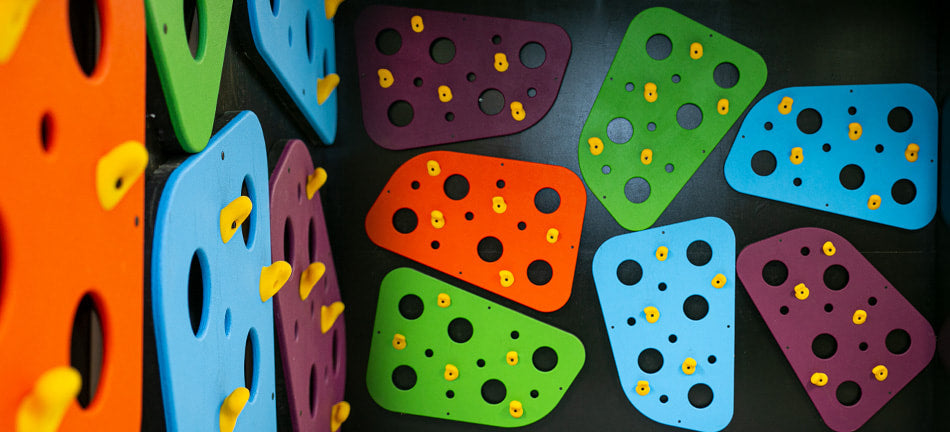7 Advantages of Climbing Walls for Kids with Disabilities

Climbing walls for children with disabilities are not merely an engaging physical activity; they serve as a cornerstone for developmental growth, therapeutic intervention, and inclusive play.
By embracing the challenge of climbing, children with disabilities can explore new ways to interact with their environment, overcome physical and mental obstacles, and experience the joy of achievement and autonomy.
Empowering Children Through Physical Activity
Climbing walls offer a multifaceted physical workout that is as enjoyable as it is beneficial. Engaging in climbing helps children improve their motor skills, enhance muscle strength, and develop better coordination and balance.
This activity requires the use of both large and small muscle groups, promoting overall physical development and contributing to healthier lifestyle habits.
Cognitive Development and Problem-Solving Skills
Climbing is a cognitive puzzle as much as a physical challenge. It encourages children to think ahead, plan their moves, and adapt their strategies in real time.
This boosts their problem-solving skills, spatial awareness, and decision-making abilities. The process of assessing routes, making choices, and experiencing the consequences of those choices in a safe environment translates to valuable life skills beyond the climbing wall.
Social Interaction and Emotional Growth

Climbing walls are a powerful tool for fostering social connections and emotional well-being. Participating in climbing activities allows children with disabilities to interact with peers in a fun, supportive setting. It helps them build confidence, self-esteem, and a sense of belonging.
Achieving goals on the climbing wall can be incredibly empowering, providing a tangible sense of accomplishment and boosting their confidence in other areas of life.
Designing for Accessibility and Inclusion
Creating climbing walls that are accessible to children with disabilities involves thoughtful design and the incorporation of adaptive equipment. Features such as wider paths, tactile indicators, and visual cues can make climbing walls more navigable for children with visual impairments, while specialized harnesses and supports allow children with physical disabilities to participate fully.
Inclusive design principles ensure that climbing walls are a space where children of all abilities can climb side by side, promoting understanding and empathy among all participants.
Safety: A Top Priority
Safety is paramount in any climbing activity, especially for children with disabilities. Implementing comprehensive safety measures, using adaptive equipment, and ensuring constant supervision by trained professionals are essential to creating a secure environment.
Regular safety checks and maintenance of equipment also play a critical role in preventing accidents and ensuring the well-being of all climbers.
Building a Supportive Community
The benefits of climbing walls extend beyond the individual participant to touch the lives of families and communities. Creating spaces where children with disabilities can engage in climbing activities fosters a sense of community and support among parents, caregivers, and educators.
Sharing experiences, challenges, and achievements helps build a network of support, offering encouragement and resources to families navigating the complexities of raising a child with disabilities.
Climbing walls for kids with disabilities are more than just an activity; they are a pathway to empowerment, growth, and joy. By providing a safe, inclusive, and challenging environment, these walls offer children the opportunity to explore their abilities, push their limits, and celebrate their successes.
As we continue to innovate and improve accessibility in recreational activities, climbing walls stand as a testament to the resilience, determination, and potential of every child.
FAQs on Climbing Walls for Kids with Disabilities
What makes climbing walls suitable for children with disabilities?
Climbing walls designed for children with disabilities incorporate adaptive features and equipment, such as tactile indicators, visual cues, and specialized harnesses, to ensure that children of all abilities can participate safely and effectively. These walls offer a unique blend of physical, cognitive, and social benefits, making them an excellent tool for therapy, skill development, and inclusive play.
How does climbing contribute to the physical development of children with disabilities?
Climbing provides a comprehensive physical workout that enhances motor skills, muscle strength, flexibility, and coordination. It engages both large and small muscle groups, promoting overall physical health and development. For children with disabilities, climbing can also aid in improving balance, spatial awareness, and fine motor control, contributing to their physical therapy goals.
Can climbing walls help with cognitive and emotional development?
Yes, climbing walls can significantly contribute to cognitive and emotional development. The problem-solving nature of climbing fosters critical thinking, planning, and decision-making skills. Emotionally, achieving climbing goals can boost confidence, self-esteem, and resilience, while the social aspect of climbing encourages communication skills and teamwork.
What safety measures should be considered when introducing children with disabilities to climbing walls?
Safety measures for climbing walls include using adaptive equipment tailored to the child's needs, ensuring constant supervision by trained professionals, and following established safety protocols. Regular maintenance of the climbing wall and equipment, along with personalized safety briefings for each child, is also crucial to prevent accidents and ensure a safe climbing experience.
Where can I find a climbing wall suitable for children with disabilities?
Climbing walls suitable for children with disabilities can be found at specialized therapeutic centers, inclusive playgrounds, and some recreational facilities. Researching local options and consulting with organizations focused on inclusive recreation or therapy for children with disabilities can help identify suitable locations. Additionally, contacting climbing wall manufacturers who specialize in adaptive and inclusive designs can provide information on installation options for home or community use.



